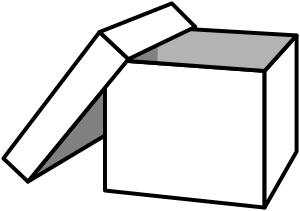The Core Concept of White-Box Cryptography
Assume you want to give somebody the ability to decrypt AES ciphertexts under a certain key without giving them the key itself. You can think of a DRM mechanism, for instance, where subscribers must access the secured digital content but should not be able to publish their own key over the Internet.
Hardcoding the key into a ‘‘simple’’ program that just performs decryption with it is not good enough, because disassembly/decompilation techniques are likely to recover it effortlessly. A (more intricate) program that resists such reverse-engineering and successfully keeps the key hidden is said to be white-box secure.
White-box cryptography considers the worst-case attack model where users themselves are malicious and assumed to have full control over the cryptographic program and its execution environment. The goal of the white-box cryptographer is to create a tamper-resistant program that can be safely executed in such an untrusted environment.
A white-box technology consists of a program-generating compiler that, for some specific cryptographic algorithm, takes as input a secret key and produces a white-box secure program that implements the cryptographic algorithm with the specified secret key. Anyone in control of the generated program can execute it on any input and get the expected output, but is unable to learn anything more than such input-output pairs. The white-box program remains unintelligible and securely hides the secret key, just as trusted hardware would.
Our Offer
CryptoExperts has developed a proprietary white-box cryptography technology, the white-box engine, that enjoys performance and security. It produces white-box components which can be personalized on your back-end server with the user keys. Our technology covers standard cryptographic algorithms and can be adapted to your specific algorithm on demand.
Our technology enables the deployment of user-specific white-box components. The white-box engine takes as input a unique identifier (associated to a user and/ or an application instance) and generates two programs: a white-box component and a token generator. These programs are bound together: the token generator wraps a secret key in a secure way (the key token) to make it usable by the associated white-box component.
The security of our technology relies on new white-box techniques developed by our research team. These techniques mix several levels of algebraic encoding and data-dependency structure hiding which are several steps ahead of the state of the art. Our technology is inherently resistant to classical reverse engineering techniques as well as specific white-box attack techniques such as Differential Computation Analysis (DCA), Fault Analysis (FA/DFA) and any kind of advanced or higher-order DCA or FA. Our technology also features protections against code lifting attacks through the use of a device / user / application binding mechanism. The security of our technology is assessed through evaluations by accredited ITSEF labs.
Our technology features many possible trade-offs between performances (storage, RAM, computation time) and the level of white-box security. Before integration, the white-box engine is finely tuned to generate white-box components matching your constraints in terms of performances.
Get in touch more information and commercial offer.
Related publications
-
Defeating State-of-the-Art White-Box Countermeasures with Advanced Gray-Box Attacks.
In IACR Trans. Cryptogr. Hardw. Embed. Syst., 2020.
-
How to reveal the secrets of an obscure white-box implementation.
In J. Cryptogr. Eng., 2020.
-
Analysis and Improvement of Differential Computation Attacks against Internally-Encoded White-Box Implementations.
In IACR Trans. Cryptogr. Hardw. Embed. Syst., 2019.
-
White-Box Security Notions for Symmetric Encryption Schemes.
In Selected Areas in Cryptography 2013, pp. 247-264, 2013.
-
Two Attacks on a White-Box AES Implementation.
Tancrède Lepoint,
 Matthieu Rivain
Matthieu Rivain, Yoni De Mulder, Peter Roelse, Bart Preneel.
In Selected Areas in Cryptography 2013, pp. 265-285, 2013.
-
Cryptanalysis of White Box DES Implementations.
In Selected Areas in Cryptography 2007, pp. 278-295, 2007.



 Pascal Paillier,
Pascal Paillier,